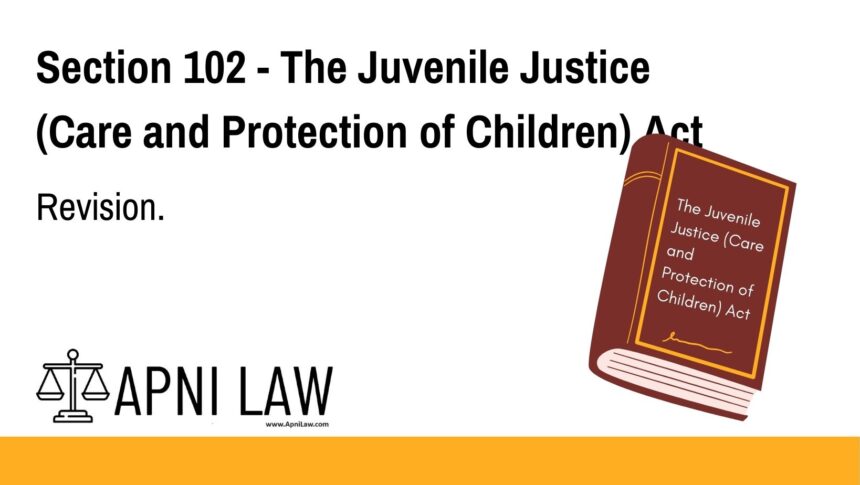Code: Section 102 of the Juvenile Justice Act
Revision:
The High Court may, at any time, either on its own motion or on an application received in this behalf, call for the record of any proceeding in which any Committee or Board or Children’s Court, or Court has passed an order, for the purpose of satisfying itself as to the legality or propriety of any such order and may pass such order in relation thereto as it thinks fit:
Provided that the High Court shall not pass an order under this section prejudicial to any person without giving him a reasonable opportunity of being heard.
Explanation of Section 102
Section 102 allows the High Court to review orders made by Juvenile Justice Committees, Boards, or Children’s Courts. The Court ensures that these decisions are legal and fair.
Key Points:
- The High Court can call for the records of any case handled by the Juvenile Justice authorities.
- It reviews the orders to ensure they are lawful and just.
- The Court may then pass any order it finds appropriate. However, it must give the concerned person a chance to be heard before making any decision that could harm them.
Illustration
Example 1: High Court Reviews a Juvenile Justice Board’s Decision
A child is convicted of a minor offense by the Juvenile Justice Board. The child’s guardian believes the decision is unfair. The guardian can ask the High Court to review the case. After reviewing the records, the High Court may change the Board’s decision if it finds the order unjust.
Example 2: Disagreement with Foster Care Placement
A Juvenile Justice Board decides to place a child in foster care. The child’s biological parents believe this decision is wrong. They can appeal to the High Court for a review. The High Court would assess the legality of the decision and may change it to ensure the child’s best interests are served.
Example 3: Revising a Harmful Decision
If a Children’s Court orders a child to be punished harshly, the child’s guardian can file a revision. The High Court will examine the case and provide an opportunity for the child or guardian to speak. If the High Court finds the decision harmful, it can reverse or modify the order.
Common Questions and Answers on Section 102
1. What does Section 102 allow the High Court to do?
Section 102 gives the High Court the power to review decisions made by Juvenile Justice Committees, Boards, and Children’s Courts. The review ensures that the orders are legal and fair.
2. Can the High Court change any order under Section 102?
The High Court can change an order if it is found to be illegal or improper. It cannot make changes without reviewing the facts and giving the concerned party a chance to be heard.
3. Is a hearing required before the High Court makes a decision?
Yes, the High Court must give the concerned party a chance to present their case before passing any order that may harm them.
4. Who can request a revision under Section 102?
Anyone who is aggrieved by an order made by the Juvenile Justice authorities can request a revision. The High Court may also initiate the review on its own.
5. How long does the revision process take?
The Act doesn’t specify a timeline, but the High Court is expected to handle these matters quickly, given the importance of the issues concerning children.
Conclusion
Section 102 ensures that decisions made by Juvenile Justice authorities are reviewed for fairness and legality. This process gives aggrieved parties a chance to seek justice, promoting the rights of children. The High Court can correct any wrongful orders to ensure that children are treated justly within the legal system.
For expert legal insights on juvenile justice issues, visit ApniLaw today!








